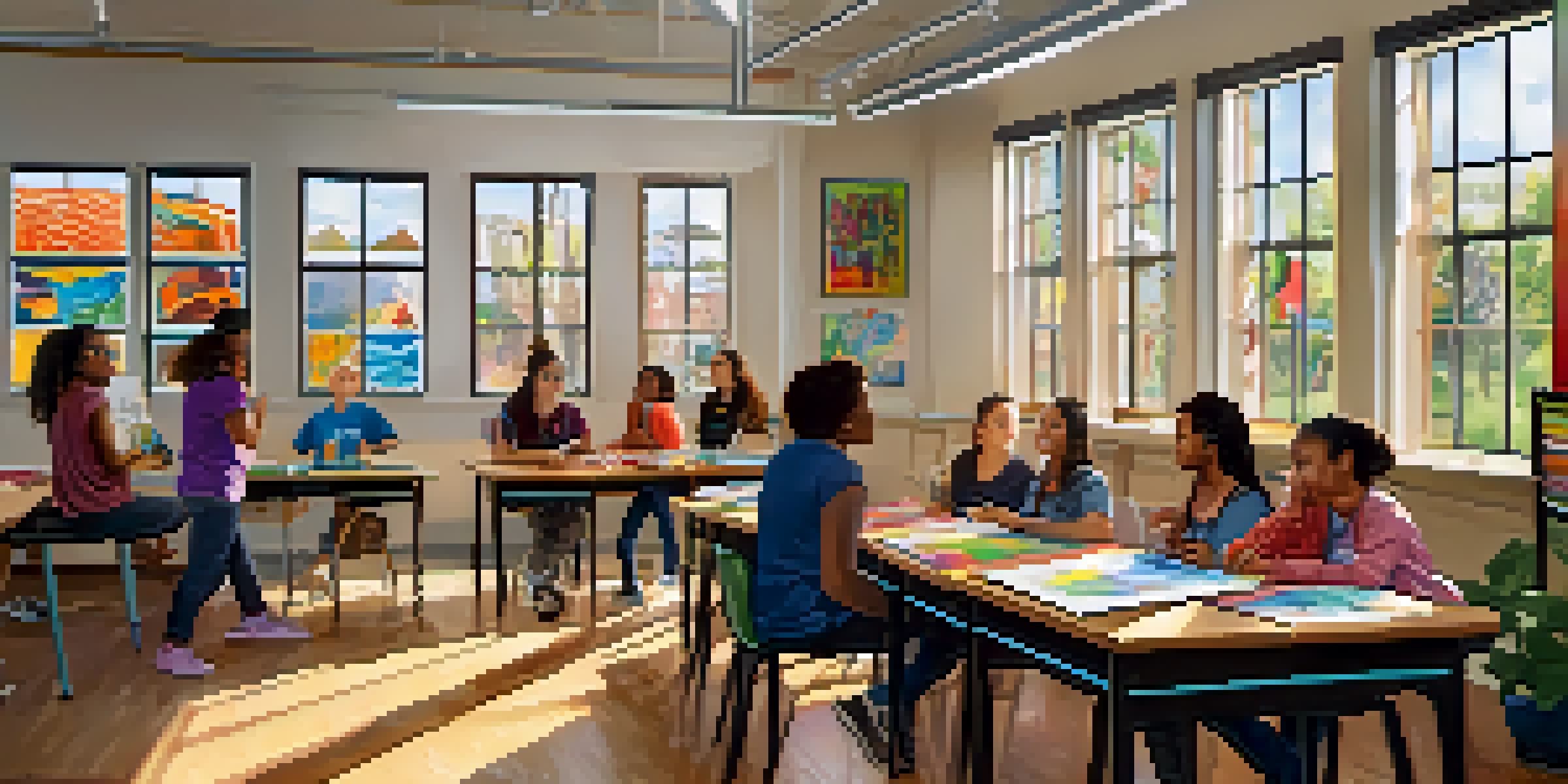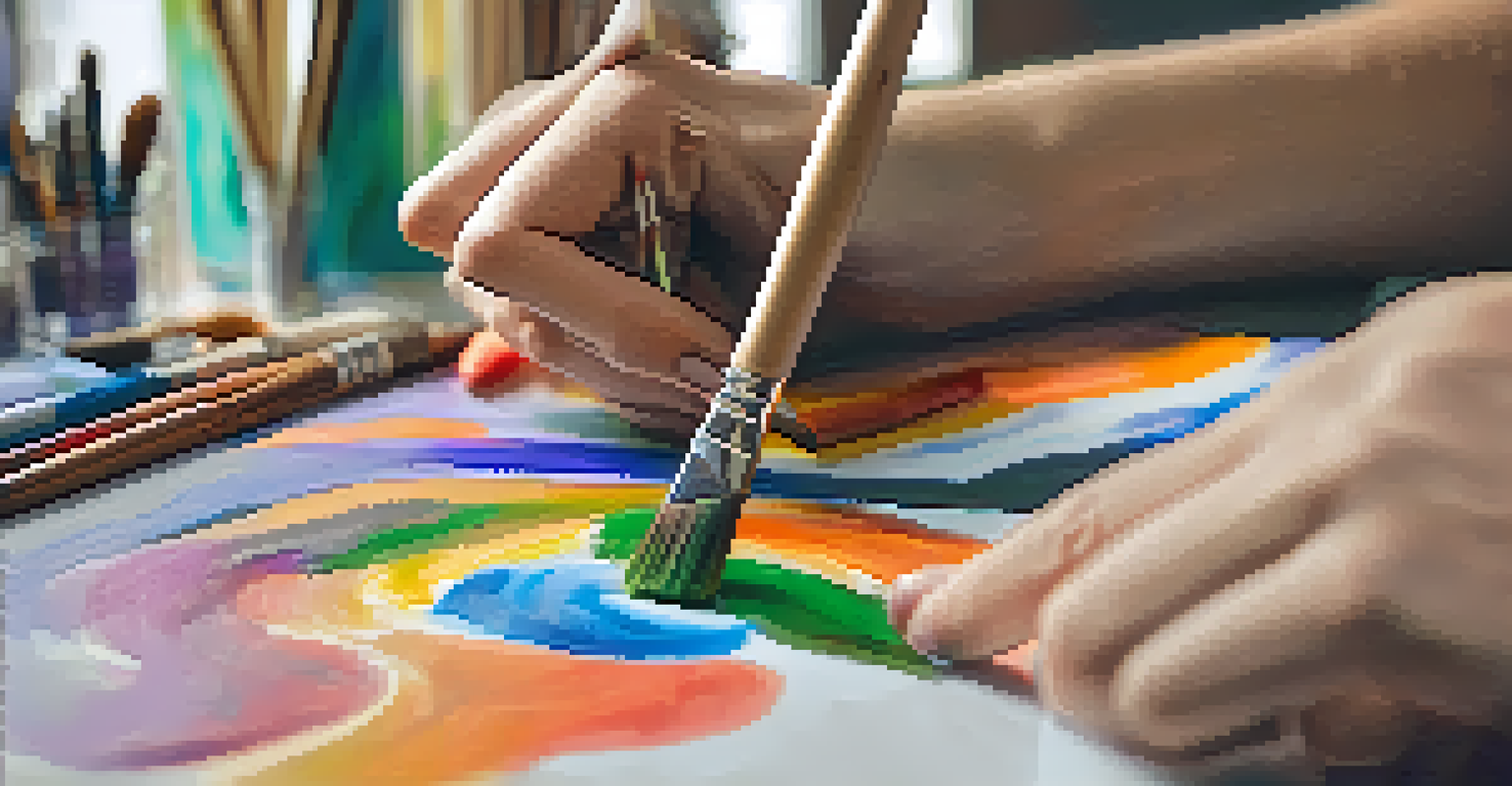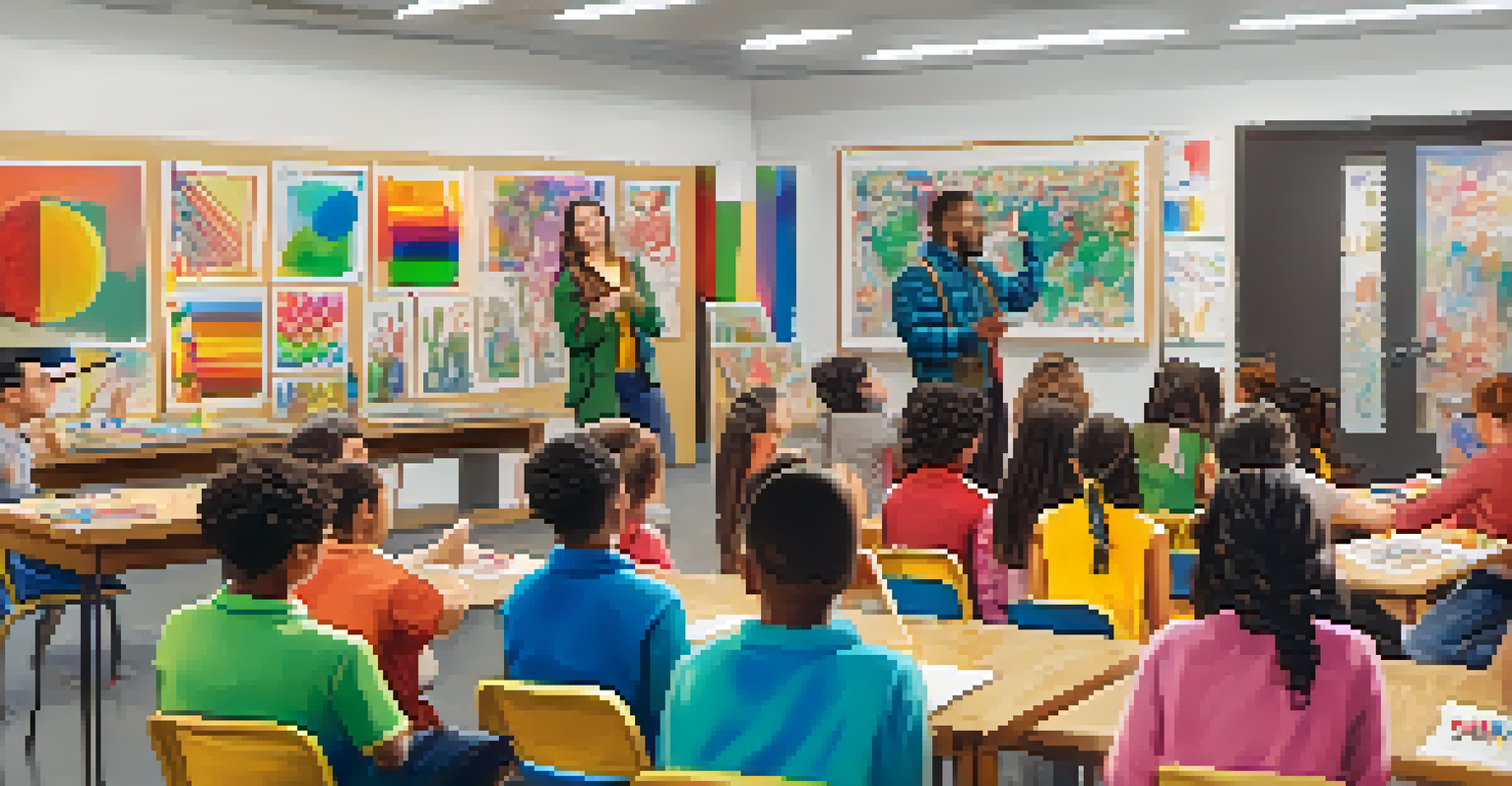The Importance of Sign Language in Art Education

Understanding the Basics of Sign Language in Education
Sign language serves as a visual means of communication, primarily used by the Deaf and hard-of-hearing communities. It encompasses gestures, facial expressions, and body language to convey meaning effectively. In an educational context, incorporating sign language can bridge communication gaps, ensuring that all students can engage fully in lessons.
The limits of my language mean the limits of my world.
Art education, rich in visual and tactile experiences, can particularly benefit from the use of sign language. By integrating this form of communication, educators can enhance understanding, making complex artistic concepts more accessible. This approach helps foster an inclusive environment where every student feels valued and heard.
Moreover, teaching sign language alongside art encourages empathy and awareness among hearing students. It cultivates a sense of community and respect for diverse ways of expressing thoughts and emotions, which is essential in any educational setting.
Fostering Inclusivity Through Art Education
Incorporating sign language in art education promotes inclusivity, allowing all students to participate actively. When teachers use sign language, they create a learning environment that acknowledges and celebrates diversity. This is particularly important in art, where personal expression is key, and everyone should have a voice.

For instance, art projects that involve group discussions can be enriched by sign language, enabling Deaf students to contribute their perspectives. This not only boosts their confidence but also enhances the learning experience for their peers. When students learn from each other's experiences, it leads to richer, more varied artistic outcomes.
Sign Language Enhances Inclusivity
Incorporating sign language in art education creates a welcoming environment where all students can actively participate and express themselves.
Additionally, using sign language helps break down stereotypes about disability. By normalizing the use of sign language in art classrooms, educators help students appreciate the unique contributions of their Deaf classmates, fostering a culture of acceptance and collaboration.
The Role of Visual Learning in Art Education
Art education inherently relies on visual learning, making it a perfect fit for integrating sign language. Visual aids, such as images and videos, can complement signed communication, creating a multi-sensory learning environment. This approach caters to various learning styles, ensuring that all students can grasp artistic concepts.
Art is the most beautiful of all lies; it is the most truthful of all illusions.
For example, when a teacher demonstrates a painting technique using sign language, students can simultaneously see the process and understand the terminology. This dual engagement can significantly enhance retention and comprehension. Visual learning, paired with sign language, creates a dynamic classroom experience that can invigorate lessons.
Moreover, utilizing visual elements in conjunction with sign language can help students develop their artistic vocabulary. As they learn to express themselves both verbally and through signs, they become more adept at articulating their thoughts and feelings, boosting their overall communication skills.
Sign Language as a Tool for Creative Expression
Sign language is not just a means of communication; it can also serve as a powerful form of creative expression in art education. Just as artists use colors and shapes to convey emotions, sign language allows individuals to express feelings through movement and gestures. This adds another layer of depth to artistic expression.
For instance, a student might create a performance art piece that incorporates sign language, blending visual art with expressive movement. Such projects can encourage creativity and innovation, challenging students to think outside the box. This fusion of art and language can lead to unique interpretations and personal storytelling.
Visual Learning Boosts Comprehension
Integrating sign language with visual aids enriches the learning experience, catering to various learning styles and improving retention.
Additionally, exploring sign language in the context of art can inspire students to think critically about the narratives they want to share. By considering how their work interacts with different forms of communication, students can create more meaningful and impactful art.
Enhancing Communication Skills Through Art
Art education provides an excellent platform for enhancing communication skills, and incorporating sign language amplifies this benefit. By learning to sign, students develop their non-verbal communication abilities, which are crucial in the art world. This skill set allows them to share ideas and critiques more effectively, both in and out of the classroom.
For example, group critiques can be more dynamic and inclusive when sign language is part of the dialogue. Deaf students can share their insights, while hearing students can learn to express their thoughts through signs, creating a richer feedback loop. This mutual exchange fosters growth and understanding among all participants.
Furthermore, the collaborative nature of art projects can enhance team-building skills. Students who engage with both verbal and signed communication learn to listen actively and appreciate diverse perspectives, which are invaluable skills in any field.
Challenges and Solutions in Implementing Sign Language
While the benefits of integrating sign language into art education are clear, there are challenges to consider. Some educators may feel unprepared or lack the training necessary to teach sign language effectively. Overcoming this barrier requires commitment and resources to ensure that teachers feel confident in their abilities.
Professional development programs focused on sign language can equip educators with the tools they need to succeed. Workshops and training sessions can provide practical strategies and resources, empowering teachers to incorporate sign language seamlessly into their art curricula. This investment in teacher training can have a lasting impact on student engagement and understanding.
Sign Language as Creative Expression
Sign language serves as a powerful tool for artistic expression, allowing students to convey emotions and narratives through movement and gestures.
Additionally, fostering a culture of collaboration among educators can help address challenges. By sharing experiences and resources, teachers can create a supportive network that encourages the use of sign language in their classrooms. This collaborative approach can lead to innovative teaching methods and enhance the overall educational experience.
The Future of Sign Language in Art Education
As we move forward, the integration of sign language in art education holds immense potential. With a growing awareness of the importance of inclusivity and accessibility, more educators are recognizing the value of incorporating sign language into their practices. This shift can lead to richer, more diverse artistic environments in schools.
Moreover, advancements in technology, such as online learning platforms and virtual art classes, can expand the reach of sign language education. These tools can help connect Deaf students with resources and communities, fostering a sense of belonging and engagement in the art world. As technology evolves, so too does the opportunity for more inclusive art education.

Ultimately, embracing sign language in art education is about more than just communication; it’s about creating a vibrant community where all voices are heard and valued. By prioritizing inclusivity, we can inspire the next generation of artists to express themselves freely and authentically.